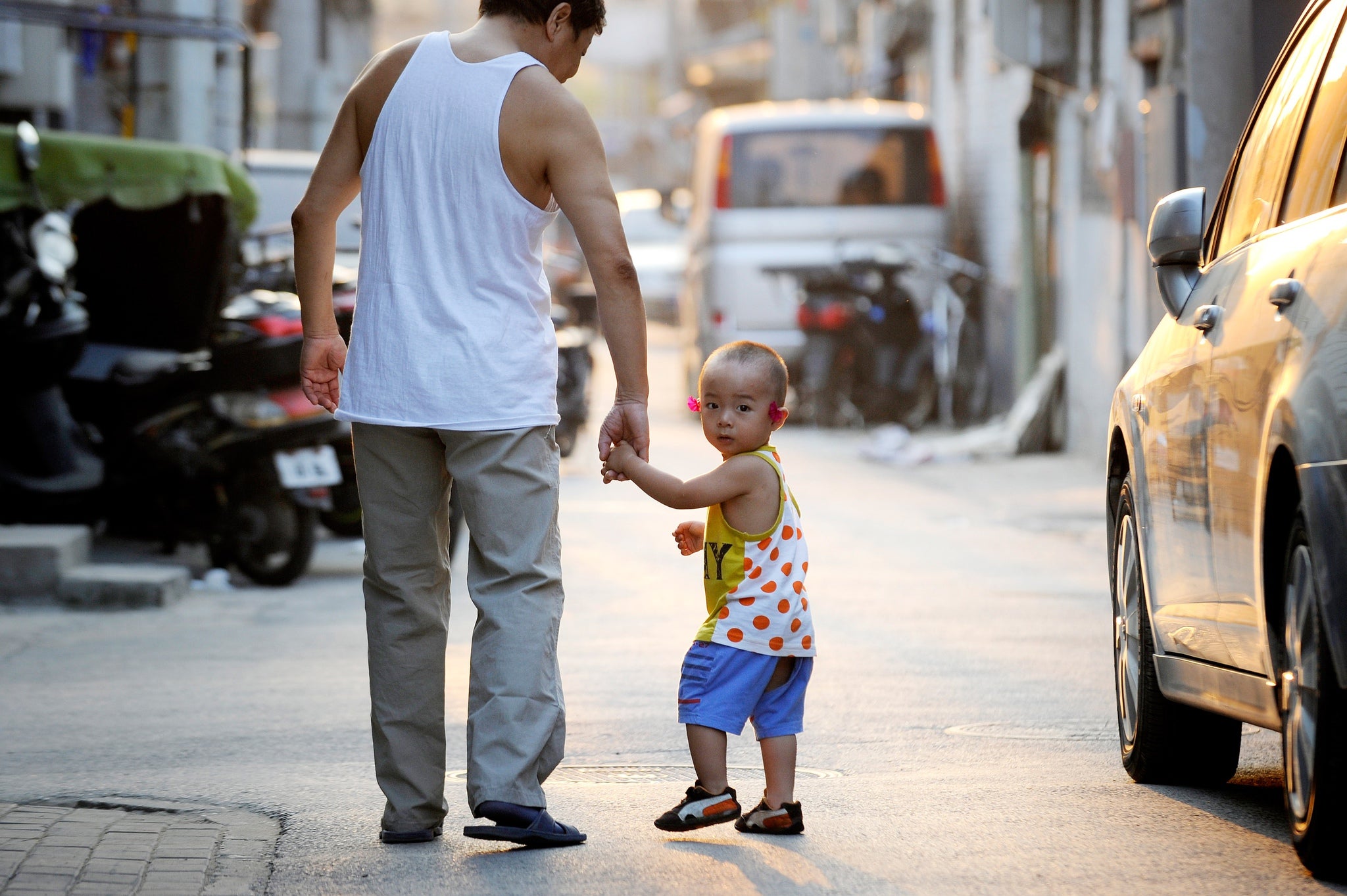Great leap forward: China loosens notorious one-child policy which prevented up to 400m births to bankroll ageing population
Communist Party responds to fears of demographic timebomb

One of the totemic policies of China’s Communist Party, the ban on families having more than a single child, has been relaxed in a historic shift by Beijing’s new ruling regime.
The decision to water down the one-child policy was taken at a summit of the Party’s elite leadership in the Chinese capital earlier this week. From now on Chinese couples in which one of the parents is an only child will be permitted to have a second baby, according to documents released by the regime yesterday. The relaxation of the restriction could give an estimated 10 million Chinese women the opportunity to have a second child should they wish.
The decision follows a previous relaxation of the rules, whereby families in which both the mother and the father are only children are allowed to have an extra child. But the timing of this decision, emerging from the first major policy meeting of the new administration of President Xi Jinping, imbues it with a special significance and signals a new era for China’s approach to its population.
The one-child policy was introduced in 1979 at the same time as the former leader Deng Xiaoping was throwing open the doors of the country to foreign investment and dismantling Chairman Mao’s command economy.
The policy was presented as a measure necessary to allow the Chinese economy to grow sustainably and to avoid the kind of social chaos the country had regularly experienced over the previous century.
Chinese officials present the policy as a success, claiming it has reduced the Chinese population today – relative to where it otherwise would have been – by some 400 million.
They say this helped China achieve its stunning 10 per cent average growth rate over the past three decades, as well as easing the pressure on the country’s highly polluted environment.
However, independent demographers question that 400 million population reduction claim, pointing out that the Chinese birth rate was already falling in the late 1970s before the one-child restriction came into force.
They also argue that the Chinese, in line with trends seen in other fast-developing countries, would have opted to have smaller families anyway as their incomes rose.
Nevertheless, the consensus is that the policy probably reduced the Chinese population by at least 100 million.
Human rights groups say the policy has led to brutal forced abortions and sterilisations, particularly in rural China.
It is also suspected of driving the growing gender imbalance in China, whereby there are six baby boys born for every baby girl today. A traditional preference for sons and the development of ultrasound scanning technology is thought to have interacted with the one-child policy to create an epidemic of selective abortions.

There are projected to be some 30 million young men in China by the end of the decade who will have no realistic hope of finding a Chinese spouse.
But what has prompted the shift from the government is not such concerns, but the realisation that the one-child policy has exacerbated the economic and fiscal problem of China’s rapidly ageing society.
At the moment around 10 per cent of the population is over 65. By the middle of the century that proportion could reach 25 per cent based on current trends.
Paying for the care of that expanding cohort of elderly people will pose an increasing burden on China’s working-age population.
But thanks to the low birth rate the working-age population is already contracting. Today there are five taxpayers to every pensioner but by the end of the next decade the ratio could be just two to one.
Those are the projections that lie behind the prevalent fear in Chinese government circles that the country could “grow old before it grows rich” and the desire to take corrective action.
China now has the world’s second-largest economy, but its per capita GDP is still only a fifth of the level of the United States and a quarter of that of the UK.
The fear is that without an increase in the birth rate the country’s economic catch-up with the developed world could stall.
Despite the one-child policy, China today is the most populous country in the world, with an estimated 1.35 billion people, up from 984 million in 1979. However, partly as a result of the restrictions, the number of children born to each woman is estimated to have fallen to 1.5 today, down from 2.3 30 years ago.
Demographers estimate that the birth rate necessary to keep a population stable is 2.1 children per woman. This drop means the Chinese population is projected to peak in 2017 and to decline thereafter.
The one-child policy was never comprehensive, even in the earliest years. It did not cover China’s 56 ethnic minority groups and families in the countryside were allowed to have an extra child if their first-born was a girl.
More recently, a growing number of wealthy families have opted to defy the two-child ban and to pay the heavy fines imposed. This is reported to have raised around $2.7bn for the state coffers in 2012 alone.
The Communist Party also revealed yesterday that it intends to abolish its network of “re-education through labour” camps and increase the role of the free market in allocating resources in the economy as part of Xi Jinping’s efforts to lay the basis for China’s prosperity over the next decade.
Join our commenting forum
Join thought-provoking conversations, follow other Independent readers and see their replies
Comments